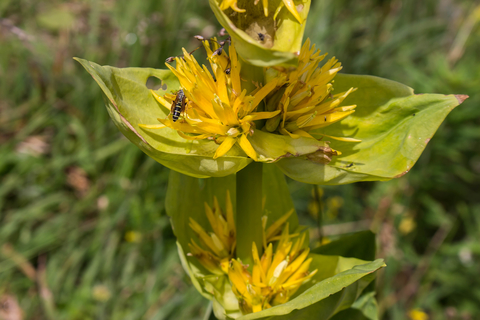Gentian Root

Also known as Gentiana lutea, wild gentian or yellow gentian, and as gentiana in English-language commentaries on Traditional Chinese Medicine.
Introduction Gentian is an herb of the high pastures of the Alps and the Himalayas. The roots take 7 to 10 growing seasons to mature. The botanical name Gentiana is derived from Gentius, king of ancient Illyria (180-167 B.C.E.), who discovered its therapeutic values, according to a history written by Pliny the Elder (ca. 23-79 C.E.) The herb has been used in European herbal medicine throughout the 2200 years since its discovery. Gentian is also mentioned in the Ayurvedic Pharmacopoeia, recommending it for anorexia and sluggish digestion.
Constituents Bitter principles (amarogentin, gentiopicroside) and the bitter-tasting gentiobiose, which is so bitter that it can be tasted even if it is diluted with 58,000,000 times its volume of water.
Parts Used Dried, mature root.
Typical Preparations Bitters, teas, tonics, and tinctures.
Summary The bitters in gentian activate a reflex action that releases acids into the stomach and bile into the gallbladder. This accelerates digestion and helps the intestines absorb fat, preventing bloating and flatulence. Gentian is typically taken before a fatty meal.
Precautions Don't take gentian if you have peptic or duodenal ulcers. May seldom cause gastro-intestinal upset. Not recommended for long term use.
For educational purposes only. This information has not been evaluated by the Food and Drug Administration. This information is not intended to diagnose, treat, cure, or prevent any disease.
This information courtesy of MOUNTAIN ROSE HERBS, with full, written permission for reuse. For further traditional information concerning Gentian, please visit this excellent resource from Botanical.com. Used with full, written permission.






